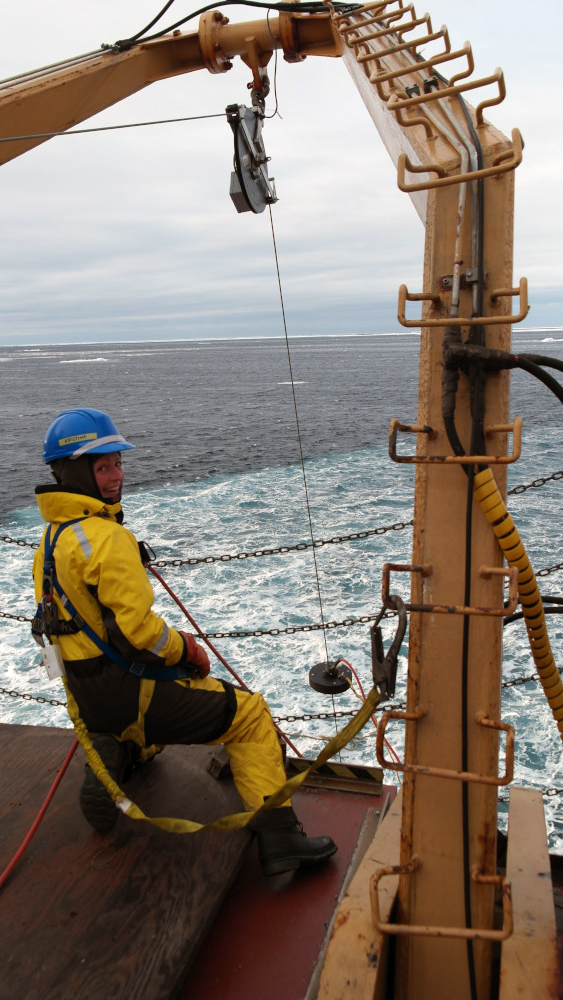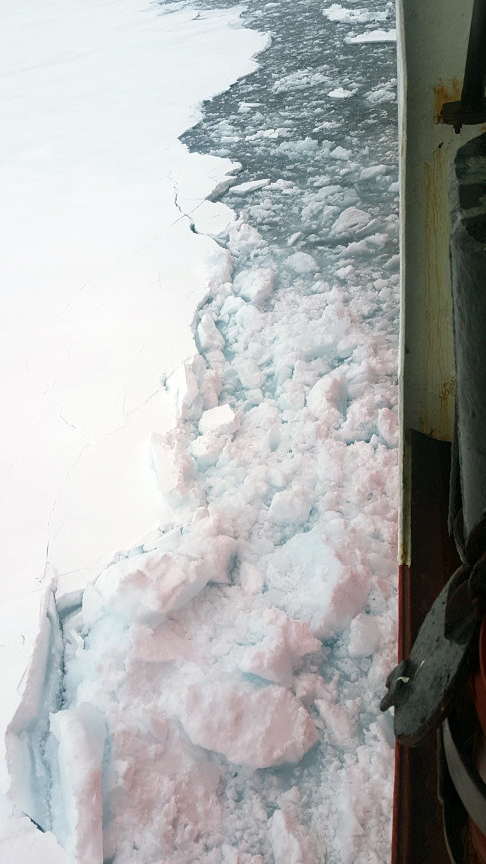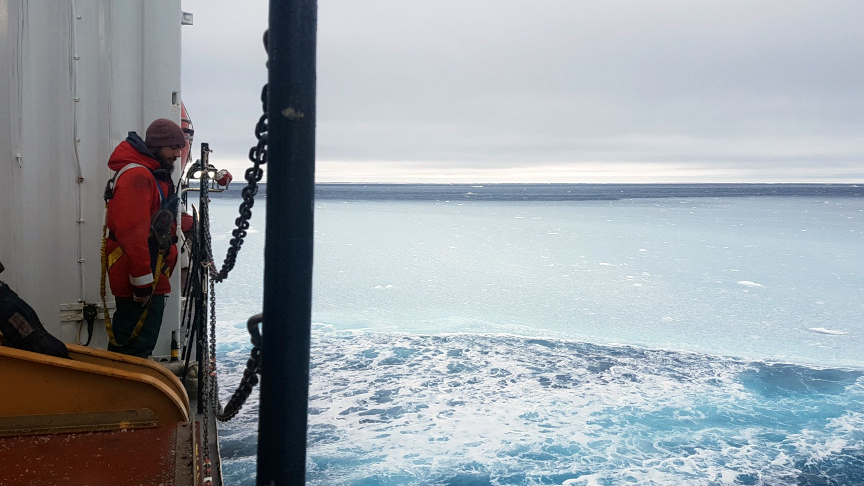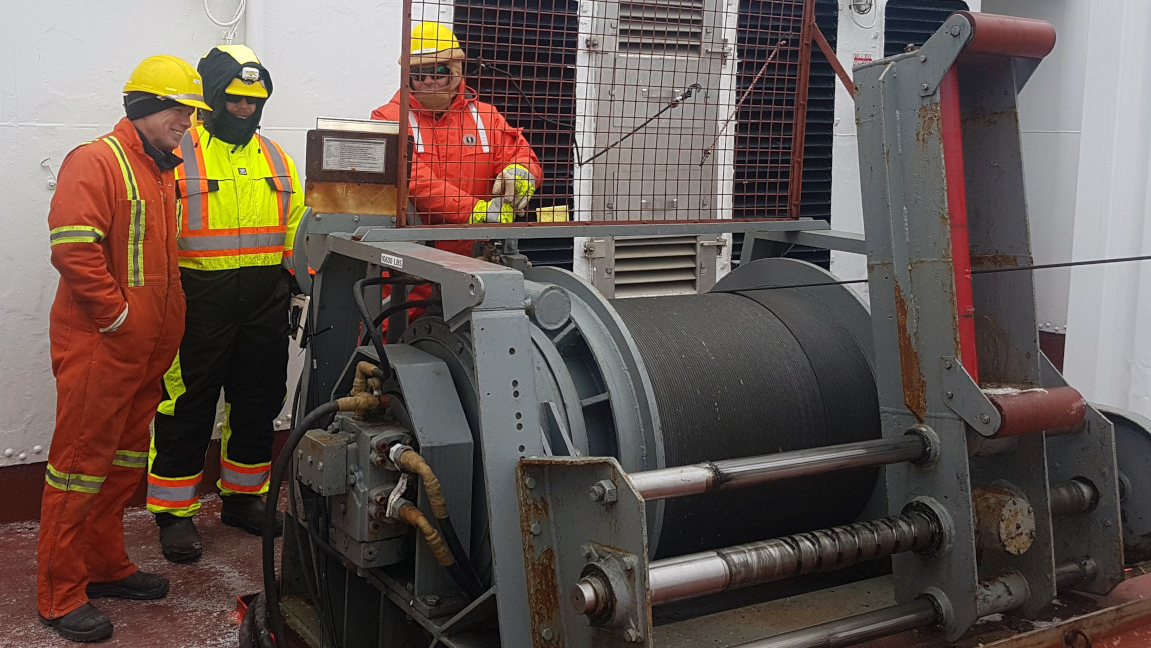Dispatch 10: A Symphony at Sea
Benjamin Richaud
August 31, 2021
If Anton Dvorak, instead of the New World, had sailed to the Arctic Ocean on the Louis as inspiration for his famous ninth symphony, he might have ended up with a very different piece. Because (let's be honest) the Louis is noisy, and she does not understand the term “harmonics.”
Our floating orchestra begins, as on most ships, with the engines. They play both the part of metronomes – with their low, rhythmic "dum-dum-dum" – and that of bass, humming softly like a large bumblebee. Although “softly” is not always accurate: open the engine room doors without earplugs and prepare to be deafened by the noise! Occasionally, the bubblers, massive air vents pushing ice away, join in – a full tuba section dedicated with unmatched passion to their part. That is, until the fog rolls in and the horn solo begins. We may place the brass section among the mechanical groans of moving watertight doors, of metal beams adjusting to the pressure of the ice, of roof panels shaking as the ship climbs ice ridges; however, no single instrument can capture the sound of ice grating against the ship’s hull. Some say we would need to include a waterfall in our symphony, others suggest a snowplow driven through slushy snow. Perhaps it would be more suitable (and probably more convenient) to delegate the part to a washing machine, or to play the symphony inside a giant dishwasher! As ice surrounds the ship, the movement grows with a staccato of cracking floes, fizzling as they gently flip in the ship’s wake. Whispers of bubbler foam mix with whistling winds, the flag drumming at 30 knots and the cymbals of crashing waves.
Layered among the constants, sporadic noises find their place. Echoes of French, German, English, and “Newfie” float through the corridors, interrupted by occasional communication “pipes.” (Unfortunately) not the Scottish instrument, pipes are short messages broadcast throughout the ship, such as "*Beeeep*: Bosun, call the bridge please. Rico, 111." "Attention all crew, polar bear on the starboard side," or the daily "Radio Bingo" numbers. VHF radio conversations accompany all operations on deck, adding lyrical interludes such as "Bridgshtrpbffffsh – Rozzzettshhh brfbrfbsbrf." "Rosette – Bridge: you have snow in your mic, we can't hear a word." Laughter and the clink of cutlery float from the mess halls at mealtimes.
Weaving throughout the piece, the science team creates its own melody. What better instrument for a crescendo than the pumps filtering for DNA, DOM, or chlorophyll? Which xylophone would have a purer sound than glass vials piled on shelves, gently clinking together as the ship rams into a sheet of ice? The buzz of the lamps and "deck unit" (computer) of the CTD control room join the fans of the forward lab servers as woodwinds, and the gurgles of sinks and seawater collection system make up the low brass. The CTD rosette winch duets with the “ice chummy,” an oboe together with a vacuum cleaner, and the nutrient sampling machine adds a modern, robotic touch.
This inharmonious white noise is part of the life on the Louis. She sings, she hums, she buzzes and roars, but she never sleeps. While this noisy chaos is at first dizzying, soon the individual movements stand out and we begin to understand the Louis’ songs. Our polar symphony tells us what is happening on board, and despite being slightly off-key, sleeping without these lullabies might prove difficult once back on land.



